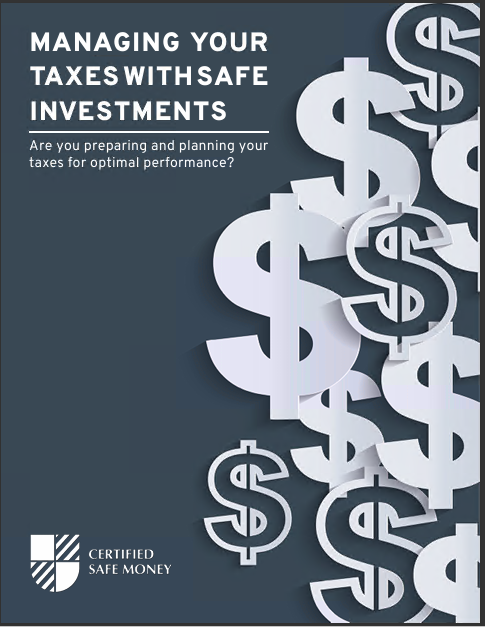Key Takeaways
-
Immediate annuities can provide guaranteed income but come with limited flexibility once purchased.
-
Always evaluate your financial goals, lifespan expectancy, inflation protection, and liquidity needs before investing in an immediate annuity.
Understanding Immediate Annuities: What’s the Appeal?
If you’re seeking a straightforward investment that can guarantee income for life, immediate annuities often pop up as a compelling option. Unlike other types of annuities, immediate annuities begin paying out almost immediately after you make your investment—typically within a month to a year.
But before diving headfirst into this seemingly safe money method, there are several critical factors you’ll want to carefully evaluate. After all, you’re looking at an investment designed to secure your financial future, and it’s crucial to ensure it aligns perfectly with your long-term goals.
Here are four key considerations that you should assess thoroughly before purchasing an immediate annuity:
Factor #1: Longevity Expectations—Will It Last?
The main draw of an immediate annuity is its ability to provide steady, guaranteed income. However, the overall benefit largely depends on how long you live after purchasing it.
The Lifespan Puzzle
When you buy an immediate annuity, you’re essentially betting that you’ll live long enough to recoup your initial investment—and hopefully more. If you have a family history of longevity or you’re in great health, an immediate annuity can be a wise choice, as you’ll likely benefit from the ongoing income payments for a prolonged period.
On the flip side, if you’re concerned about health issues or simply uncertain about your long-term prospects, you might want to reconsider or explore annuities that offer guaranteed payout periods or beneficiary protections.
Survivor Benefits and Options
Most immediate annuities offer choices that could provide for your spouse or other beneficiaries after your death. Options include:
-
Joint and survivor annuities, continuing payments to a surviving spouse
-
Period-certain annuities, which ensure payments continue for a fixed term (like 10 or 20 years)
Evaluate these choices carefully, as they can significantly affect your monthly payment amounts.
Factor #2: Inflation Protection—Is Your Income Future-Proof?
Inflation can quietly erode the purchasing power of your income, and if your annuity payments stay flat, you might find your guaranteed income doesn’t stretch as far as you initially expected.
The Inflation Risk
Imagine receiving $2,000 per month starting today—sounds good, right? But in 20 years, with average inflation, that amount could buy significantly less than it does today. Immediate annuities with fixed payouts don’t automatically adjust to inflation, so it’s vital to think ahead about how inflation may impact your financial comfort over time.
Inflation-Adjusted Options
Some immediate annuities offer inflation protection, meaning your payments could gradually increase, typically by a fixed percentage annually. However, this adjustment usually comes at a cost—initial payouts tend to be smaller than fixed annuities. You’ll need to balance lower immediate income against the security of maintaining purchasing power long-term.
Factor #3: Liquidity—How Accessible is Your Money?
One crucial aspect of financial planning is ensuring that your funds remain accessible when you need them. Unfortunately, this is where immediate annuities may fall short.
The Trade-off: Guaranteed Income vs. Flexibility
An immediate annuity typically involves surrendering a lump sum upfront in exchange for regular payments. Once the investment is made, you usually lose direct access to the principal amount. This lack of liquidity can become problematic if unexpected expenses or financial opportunities arise.
If liquidity is a priority for you—perhaps you have concerns about medical expenses, potential emergencies, or simply maintaining financial flexibility—then fully investing in an immediate annuity may not be the optimal choice.
Partial Liquidity Solutions
To address liquidity concerns, you could consider:
-
Splitting your investment, dedicating a portion to an immediate annuity for income stability and keeping another portion in more liquid investments.
-
Choosing annuities that allow partial withdrawals, although these may carry fees or lower payments.
Carefully assess your liquidity needs and ensure you’re comfortable with the long-term commitment.
Factor #4: Evaluating Alternative Investment Options
Immediate annuities aren’t the only game in town when it comes to safe investments that provide predictable income. Exploring alternative avenues could offer more flexibility, growth potential, or control.
Bonds and Fixed Income Investments
Investing in high-quality bonds or bond funds could also generate predictable income, along with potentially greater liquidity. Bonds may fluctuate in value, but they’re generally less restrictive than annuities regarding accessing your money.
Laddered CDs
Certificates of Deposit (CDs), especially when laddered strategically, can provide predictable income and more liquidity, allowing you to access your principal as each CD matures without penalty.
Dividend-Paying Stocks
For investors open to moderate risk, dividend-paying stocks can deliver regular income and potential capital appreciation. While less predictable than annuities, dividends can offer income growth over time, keeping pace or even exceeding inflation.
Consider how comfortable you are with managing these alternative investments or if you prefer the simplicity and guaranteed structure that an immediate annuity provides.
Bringing It All Together: Making an Informed Decision
Deciding whether an immediate annuity is right for you ultimately hinges on your financial goals, lifestyle, health considerations, and comfort level with long-term commitments. Immediate annuities excel at offering predictable income, potentially safeguarding against the risk of outliving your savings. But they do require substantial upfront investment, and once you’re in, flexibility diminishes significantly.
Carefully weighing these four critical factors—longevity, inflation protection, liquidity, and alternative options—can significantly clarify whether this investment vehicle aligns with your overall retirement strategy.
Next Steps: A Financially Confident Future
By carefully analyzing these considerations, you’ll position yourself to make a decision that genuinely supports your financial security and lifestyle goals. Before investing, you might find it beneficial to discuss these options with a financial advisor who can offer insights tailored specifically to your unique situation.
Remember, your financial future deserves thoughtful planning. Take the time to ensure you’re selecting an investment that feels right today and continues to feel right for years to come.













